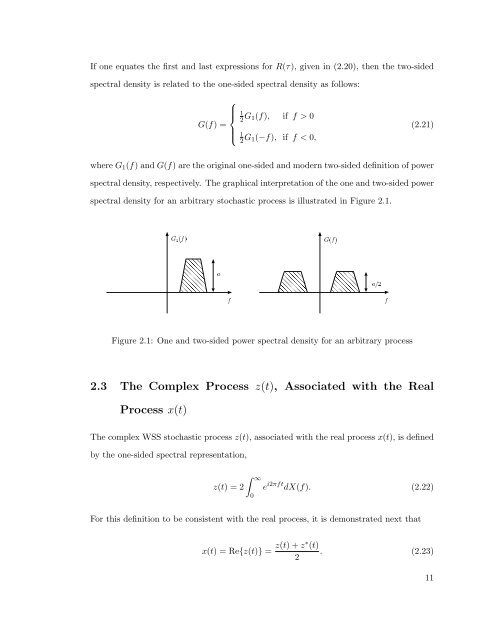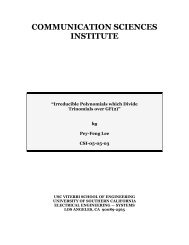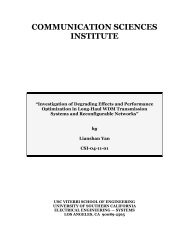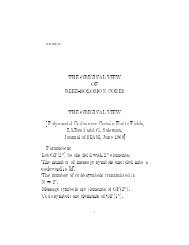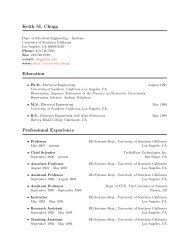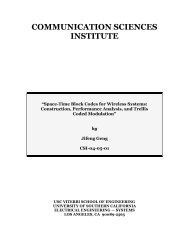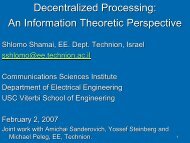Decoding Error-Correction Codes Utilizing Bit-Error Probability ...
Decoding Error-Correction Codes Utilizing Bit-Error Probability ...
Decoding Error-Correction Codes Utilizing Bit-Error Probability ...
You also want an ePaper? Increase the reach of your titles
YUMPU automatically turns print PDFs into web optimized ePapers that Google loves.
If one equates the first and last expressions for R(τ), given in (2.20), then the two-sided<br />
spectral density is related to the one-sided spectral density as follows:<br />
⎧<br />
⎪⎨<br />
G(f) =<br />
⎪⎩<br />
1<br />
2 G 1(f), if f > 0<br />
1<br />
2 G 1(−f), if f < 0,<br />
(2.21)<br />
where G 1 (f) and G(f) are the original one-sided and modern two-sided definition of power<br />
spectral density, respectively. The graphical interpretation of the one and two-sided power<br />
spectral density for an<br />
½´µ<br />
arbitrary stochastic process is illustrated<br />
´µ<br />
in Figure 2.1.<br />
<br />
¾<br />
Figure 2.1: One and two-sided power spectral density for an arbitrary process<br />
2.3 The Complex Process z(t), Associated with the Real<br />
Process x(t)<br />
The complex WSS stochastic process z(t), associated with the real process x(t), is defined<br />
by the one-sided spectral representation,<br />
z(t) = 2<br />
∫ ∞<br />
0<br />
e i2πft dX(f). (2.22)<br />
For this definition to be consistent with the real process, it is demonstrated next that<br />
x(t) = Re{z(t)} = z(t) + z∗ (t)<br />
. (2.23)<br />
2<br />
11


